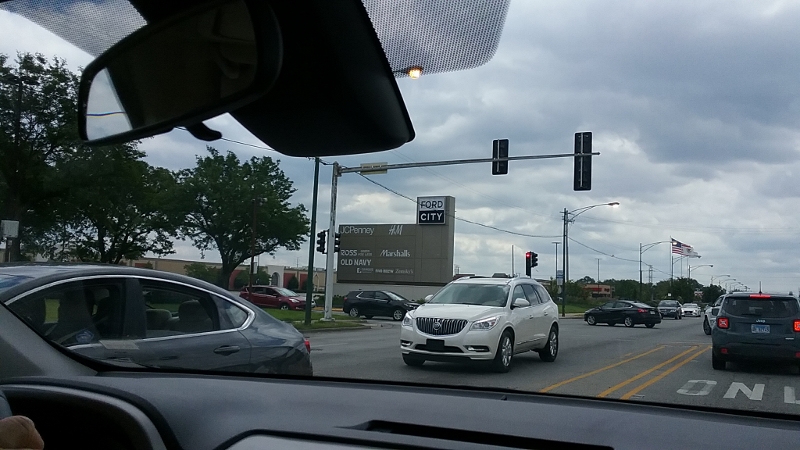
Last June, as some of you regular readers may recall, I attended the CLC West of the Lake Region car show at Ettleson Cadillac-Buick in Chicagoland. I met up with several of my friends there, including Ron Schweitzer, Andrew Bobis, Mike Risatti and Jim Smith. Smith was late. But he made up for it. If you missed my walk-and-talk car show reports, you can check them out here and here.
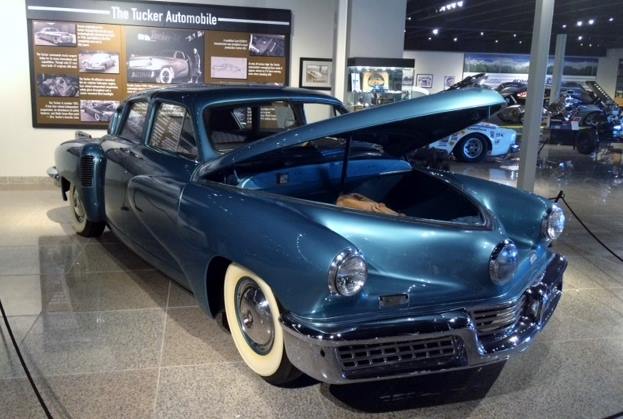
As we were wandering amongst the Eldorados and Rivieras, somehow the subject of the Tucker came up. Jim’s grandfather was involved with Tucker back then, and I’m hoping he will do a post right here sometime to tell us more about that! But anyway, I mentioned during the course of that conversation that I’d heard the factory was still there, albeit divided up into different uses. Jim said, “Yep, it’s still there. in fact, it’s only about ten minutes from here.” “Really?” “Yeah. You wanna go check it out?” Heck yes!
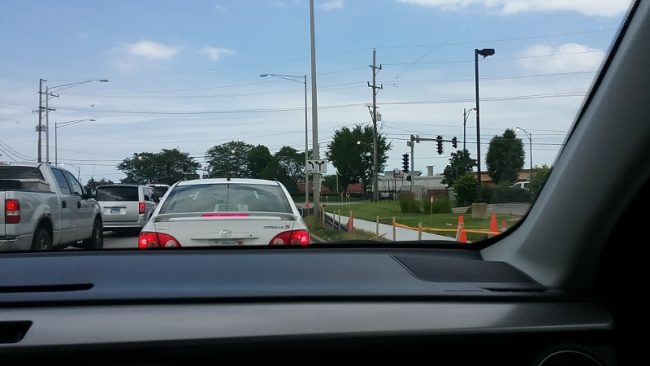
Now, while I do visit Chicago and its suburban environs several times a year, I’ve never gone too far from Interstate 80. Simply because I don’t want to get lost, or mired in traffic. So I probably wouldn’t have gone myself, despite it being so close to the car show. But with Jim volunteering, I was in!

In short order, I didn’t know where we were, and commented on the fact that, although it had only been a few minutes, I wouldn’t know how to get back. Ha ha. And indeed, were were soon mired in traffic, though it wasn’t too bad for a Saturday. As we came up to an intersection, there was a ’70s style Holiday Inn, and behind it, there the factory sat.
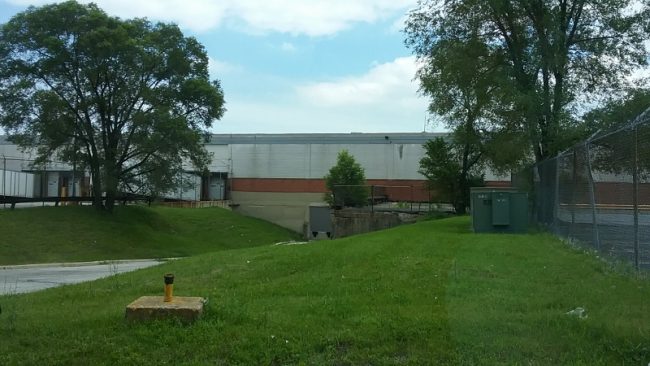
Most of it, believe it or not, is a Tootsie Roll factory. Another part of it, again, believe it or not, is a mall, with a Marshalls and a JC Penney, among other stores. Bizarre!
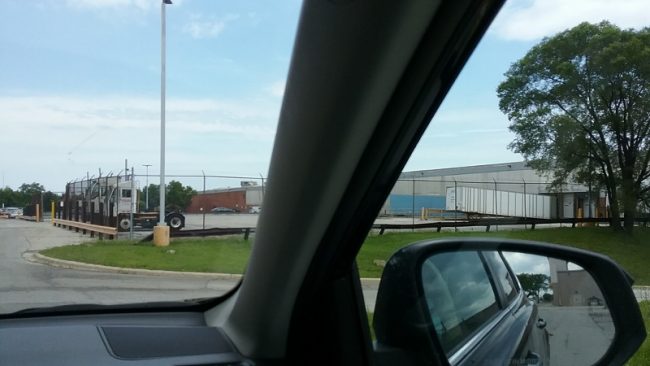
But it is still there. Originally built to make B-29 engines for WWII, after the war it was unused and for sale. There were few takers, because it was huge. Huge to the tune of around six million square feet. It covered about 30 blocks, fronting Cicero Avenue.
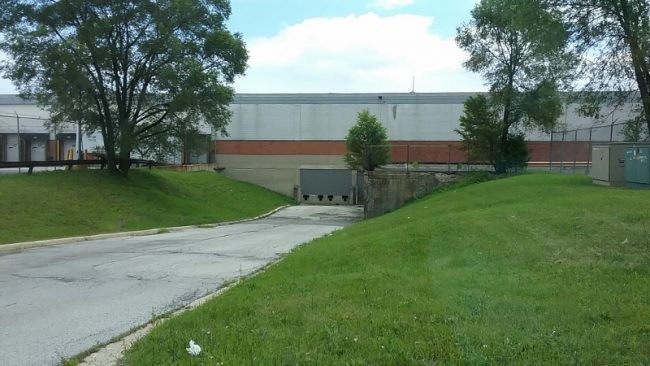
Tucker managed to get the lease for the sprawling complex, and as we all know, it all vaporized in short order.

After Tucker was history, Ford Motor Company bought the site in 1950 and built aircraft engines there until ’59.
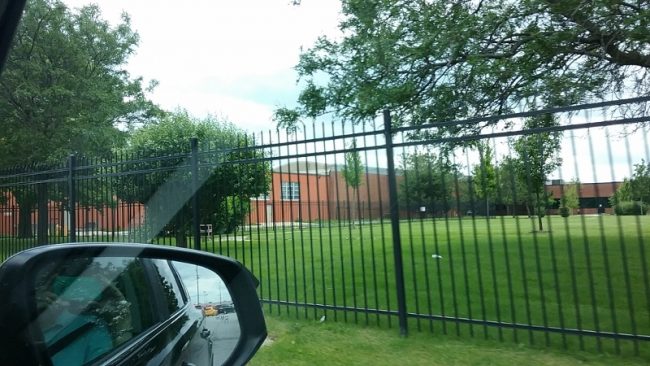
Then in 1961 the mall was created. A small portion of the factory was torn down to make way for the mall redo, and the mall itself opened in 1965. Tootsie Roll came along at some point after FoMoCo vacated the premises.
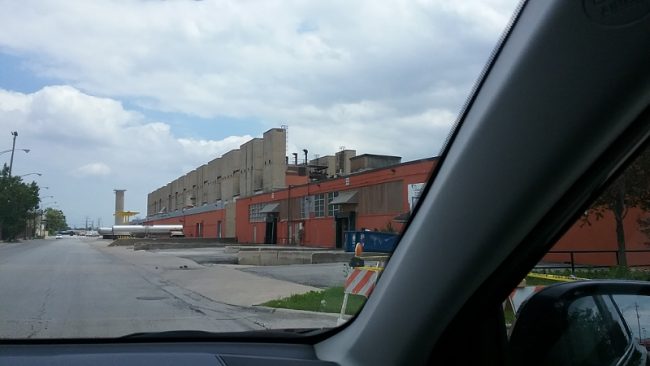
Today, Tootsie Roll is still there, as is the mall, though the mall didn’t look like it was doing so hot the day of our visit. Jim told me this part of the city is kind of stagnant retail-wise.
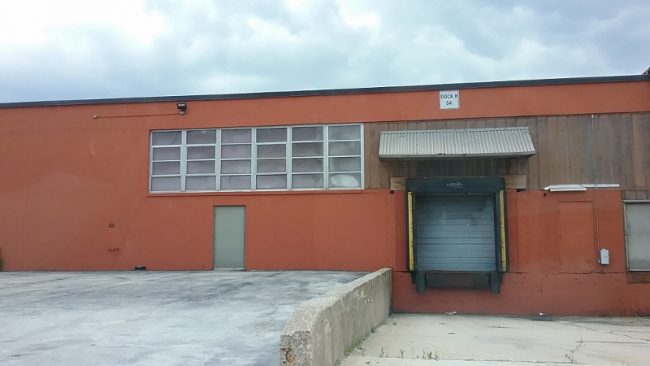
My host didn’t merely drive by the front, he took us completely around the property.
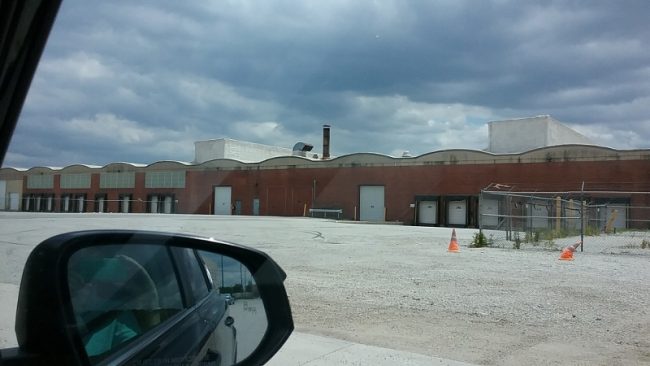
And while it may not be apparent from the photos, this place was BIG. Really big! I’d say the mall takes up maybe 5% of the whole complex.
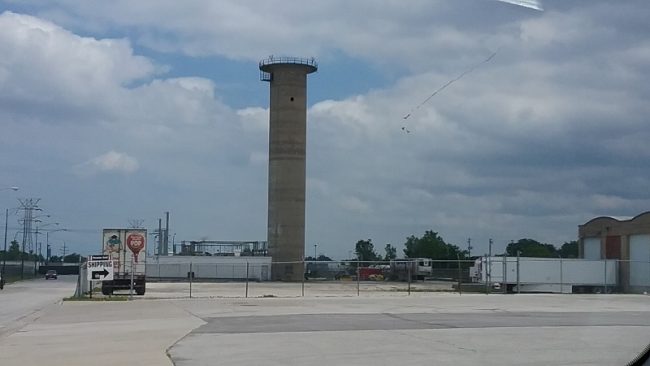
This tower along the side of the property was interesting. Jim told me during WWII it was used to scan the skies for enemy aircraft, back when they were making B-29 engines. Hasn’t been used in decades, of course, but it still stands.
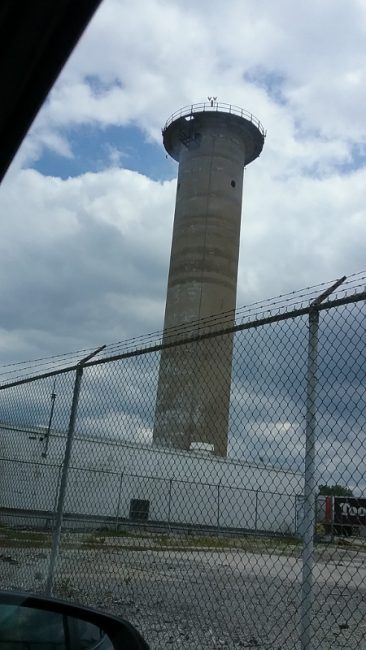
This was just really cool to see! It really made my day. And I was already in a good mood from all the Broughamage I’d seen at the car show.
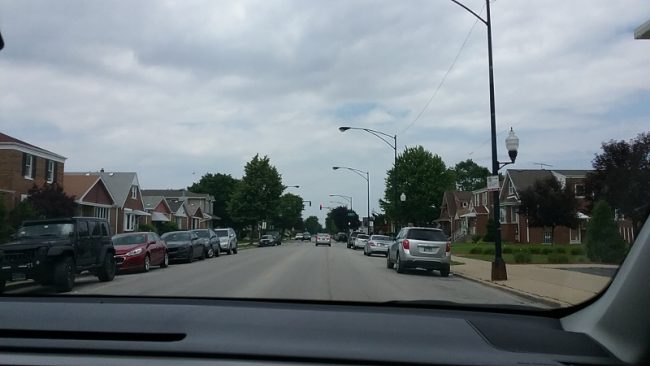
After the factory, we just drove around Chicago for a while, into the neat, clean neighborhoods around Cicero Avenue and Midway Airport, with all the well-preserved 1950s neighborhoods.
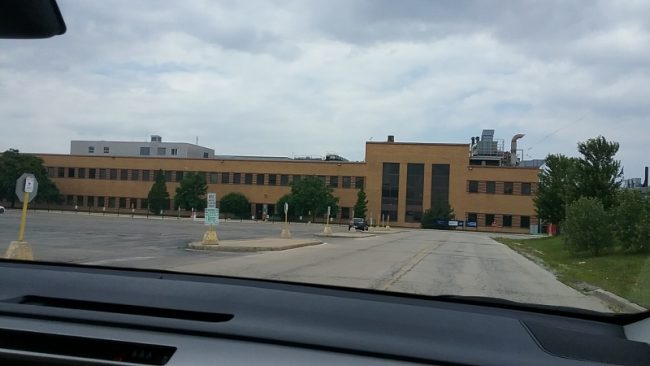
We also passed by the Electro-Motive factory, which is still there, and not far from Ettleson Cadillac either. The original admin building was still there. And they still make locomotives there, according to Jim.
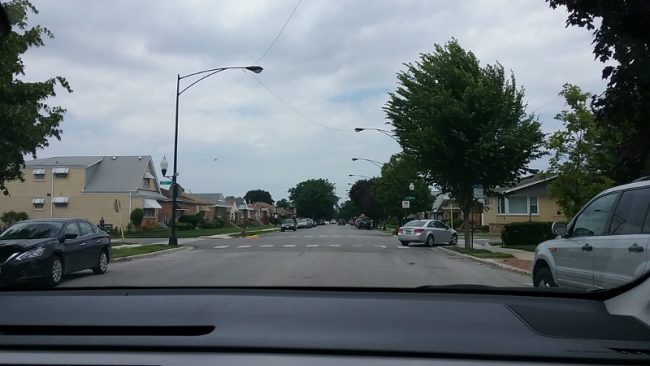
A friend of mine, Sean Flanagan, had an uncle who worked there for years. And Jim told me they used to have a really good car show there every year, until the early ’90s. He attended several back then.
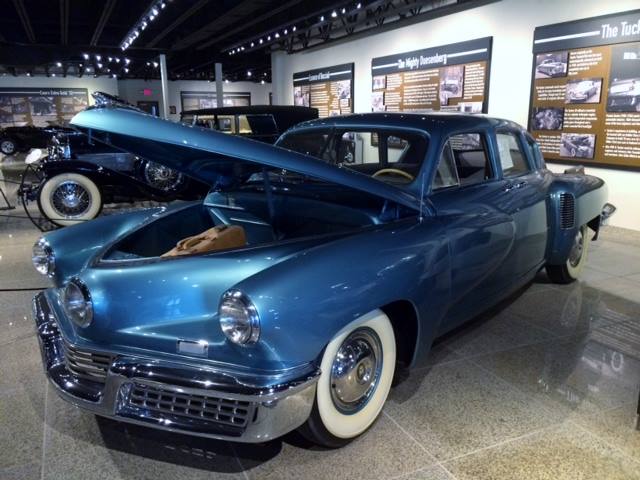
Oh, and by the way, the pictures of the Waltz Blue ’48 Tucker were taken by my Uncle Dave, at the World of Speed Museum in Lincoln, Nebraska, back in 2016. I’ve seen a Tucker in person, but it was back in 1989 at the yuuuge car show in St. Ignace, Michigan. I was nine. That deep emerald green motorcar completely captivated me!

And when my parents got me the 1/24 scale Franklin Mint Tucker back in 1991-92 for Christmas, it became my most prized possession. So as you can see, being able to see the factory in person, was really a blast! Special thanks to Jim for the field trip!
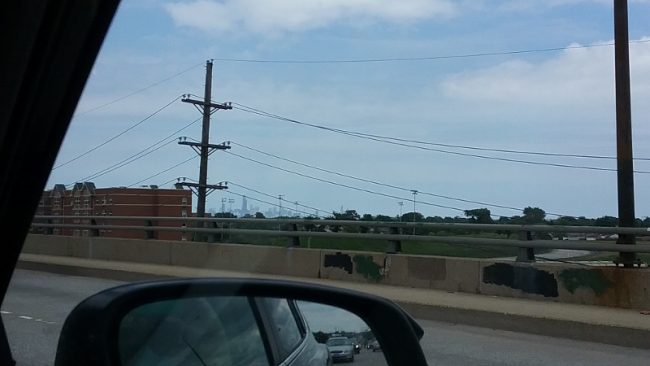
Sears Tower in the distance. Yes, it will always be the Sears Tower to me.







23 Comments
Great tour, Tom and Jim!
If you want to see Tuckers, come to PA! The Fabulous Darigo Ranch & Automotive History Museum (TM & pat. pending) is about 15 minutes from the Cammack Tucker collection at the AACA Museum. If you come in season (April-October, I think), we can hit the Swigart Museum, which has one of the 50 “production” cars AND the Tin Goose!
The Swigart is small but mighty and allows you to get up close to the cars. With your credentials as as a member of the Fourth Estate, I’m sure they’d be glad to allow you a close look.
Great story and pictures Tom. Did you know the most expensive weapons program in WWII was not the Manhattan Project, but actually the B-29 program needed to deliver the bomb? It was absolutely incredible that during a full-scale war the US was able to build the infrastructure necessary to build such an incredible weapon in such a short space of time, and this Tucker factory was only a small part of it. Today, it would take 10 years just to get planning and environmental approvals before you even start building anything, and then you would almost certainly still get sued by Greenpeace or some other nutty tree-hugger group that didn’t want any “smokey” factory getting built. Throw in the crazy state taxes and regulations in Illinois (and California, NJ, NY, etc) and nobody in their right mind would ever build a new plant in a Blue state.
One forgets just how much industry was involved with the war effort. Growing up adjacent to a steel mill in Northeast Ohio, I’m quite used to seeing large factories. About twice a year, I end up going to or through Chicago for work purposes, and get a great big thrill driving I-80/90 by the US Steel facilities in Gary, IN. It’s ugly and rusty but reminds me greatly of home.
I’m often amazed that the US steel industry allowed itself to become a footnote in the industrial index of our country; off the top of my head, I don’t think there are many (if any) US owned steel mills left. I get that our cost of living and other factors have made basic materials manufacturing expensive, not to mention other basic manufacturing. We’ve lost something and we lost it a long time ago, but the chance for average people to gain access to the middle class is getting smaller all of the time…
About 4 years ago, I went out to Fontana California to look at a project. As we were pulling into the complex I noticed that it was right beside the NASCAR track. From what I was told, the entire area was once part of the Kaiser empire and Liberty ships, or at least parts of them, were built there. Seems that some of the complex was sold to build the track and parking. From what I was told, it was approximately 1/4 of the complex that was sold for that. The rest was leased out to various other companies and it was still huge.
Another fascinating bit of history, thanx for sharing it .
-Nate
I know this spot like it is my own.
I grew up there, went to high school just a few miles away..Saint Laurence and Saint Albert.
I remember the candy plant, I remember the mall..the Ford City Mall,being built. Hell, I worked there and hounded girls there.
I remember the underground walkway being built to tie two locations together.
What a trip down old memory lane.
These old factory hulks are common to most even small cities. In theory that gets around the difficulty of getting something new built. They are available for a song. Yet the fact that most sit idle points to a problem with America First economics that I worry will lead to it’s failure. Are there really people with capital in such places willing to take the chance on the investment in a new factory hiring and training locals knowing they will have to pay a living wage and then go out and compete with People’s liberation Army Workers Paradise No 57 in Canton or whatever they call it now. Rich and near rich folks having got so used to flipping financial instruments and real estate, Are they really willing to put their blood sweat, toil, and genius on the line?
It can be done. Herbert Austin in the UK bought a giant abandoned printing works in 1905 in Longbridge. The size of it made him realize that he could go smaller and cheaper than the ubiquitous Model T Ford and expand the market. His Austin 7 was a hit not just in the UK. Licensed copies were the first Renault in France and the first BMW in Germany. Unlicensed copies were the first Nissan, Surprise, Surprise, Surprise as Gomer would say. Austin built the Metro there in the 80s but it closed with the failure of Rover in 2005. It since has been torn down to build subdivisions
Actually, Austin benefited from the displacement taxes (or bore size) that various governments around the world used to protect their markets from the Model T. The taxes got crazy expensive by the time you hit the size or bore of the Model T motor (about 3 liters), and thus only the super rich could afford a car with an American size motor. The Brits used a bore size formula, which is why British engines always had very long strokes relative to bore size. Throw in import duties, high VAT levels (which were calculated on the price of the car + shipping + displacement tax + import duties), and very high fuel taxes, and US cars were effectively locked out of most of the developed world when US cars led the world by far in terms of economies of scale and technology advantages.
He also benefited from having a good idea and the audacity to try it. Colin Chapman and Bruce McLaren built their first sport specials off the Austin 7. Big time manufacturing and British blacksmith shop genius playing off each other.
Good for Britain for looking out for the local guy, a shame they got away from that.
I’m cutting back on my Interwebs screeds, but this has to be address.
Change is inevitable. Or as one wag put it, ten years ago, Shift Happens. No time can be preserved in amber – before there was near-full-employment, with fat union wages, there was privation and subsistence farming. Things got better, and then did not.
When I was a little kid of five, our family moved to my father’s home area. Northeast Ohio. Not far away was Lima, Ohio – few here will recall that for forty years, Lima was the epicenter of the new generation of rail power. Huge, superheated-steam machines – Lima called it Super-Power. It began in the mid-1920s, and continued on until 1948, when they delivered their last steam units to the Nickel Plate Road.
There was an upstart company in LaGrange, which had been bought by GM….they went from crude, near-experimental 600-hp units to essentially having the locomotive market to themselves. Only GE, nearly as big and deep-pocketed, could wage a serious competition – and they took years, their locomotive offerings in the 1980s were still pretty crude and underwhelming.
And, Lima? After trying, and failing, to convert to diesel products, with General Machinery/Hamilton, they became a subsidiary of BLH, which itself got out of locomotive building. They made cranes for a few years, then sold what was left of their product line, to Clarke Equipment.
So much for Super-Power. Now meantime, LeGrange is just a secondary plant for Electro-Motive, which is part of Caterpillar, not GM. And after serious missteps, EMD is a distant second to GE Rail.
And locomotive production for EMD is focused on Mexico, with London, Ontario, continuing, against the day of past, and probably future, punitive Canadian/EC tariffs.
Shift happens.
(hit the SEND) key too soon…)
HOW this Shift happens, is what needs to be controlled. Why do these plants stand empty in the Land of the Free? Because, as one commentator said, the modern approach is, if it moves, regulate it. When it stops moving, subsidize it. But never, never, are industries, in our Regulatory State, allowed normal, organic growth. That seems to be for a benighted age, which we pine for…but not enough to roll back our phalanxes of regulators and tax-collectors.
This is the result. It’s less the killing of industries, than it is, that when they naturally die, nothing springs from the now-poisoned soil. So the new replacement comes from elsewhere. Put the barricades of embargos and tariffs up, and no replacement comes at all.
BTW : on the North Shore of Boston, Ma. , tucked in between the millionaire’s mansions, are several WWII submarine watch towers, interesting to say the least .
-Nate
South Shore too, Marshfield.
Thanx .
I have some interesting 1950’s & 1960’s memories of growing up in the Boston Metro area, it’s all _very_ different now .
For a while my middle brother was living in one of those untouched turn of the century mansions, I liked it very much but can only imagine the $ involved in heating or maintaining it….
We had a superb thanksgiving there a few years before mom passed away .
-Nate
I grew up in Boston, then spent 20+ years in Plymouth. Great memories. In Florida now, within a short drive of IMSA at Daytona and Sebring and the IndyCar season opener.
Hmmm… My head shot and last name disappeared when I linked to my new WIX website instead of my stillborn WordPress blog. So now I’m a little green and yellow widget that looks vaguely like the Android critter.
Thanks for lighting such a neat facet of the Tucker saga.
When the Cammack collection still was here in Alexandria, a good friend arranged to get his Dad a long-coveted tour of the premises. To my everlasting gratitude, he invited me along. Sidling through a maze of Tucker stock certificates, spares, cars and clutter was a treat I’ll never forget.
The Tucker at the Smithsonian (NMAH) is a “Gift of the United States Marshals Service”. I’d love to think there’s a great story there, but it’s probably just Civil Asset Forfeiture’s great-grandpa.
“during WWII it was used to scan the skies for enemy aircraft, back when they were making B-29 engines.”
In Chicago? Where could these have come from?
Seaplanes off German Navy ships? Of course they didn’t have much luck with the River Platt, the Saint Lawrence would have been beyond bold. A port stop in Quebec to turn them Vichy. ha
It’s nice to see you here Roger. I have enjoyed your work for years at the other site.
Now you know the neighborhood around Ford City Mall USED to be nice. Now it’s declining dirty and dangerous.
The Electromotive plant is nowhere near the old Tucker plant. It is located about 10 miles away in LaGrange, IL.
Never said it was, but we passed by on the way back to the show in Hodgkins.
My boys love going with me to the AACA museum in Hershey, PA. They can get a bit bored on they’re way around the museum sometimes, but the interactive display in the Tucker section always brings them back on task. Last time my then 9 year old proclaimed the turning center headlight a “really good idea”.
The only Tucker I remember seeing in person was a yellow one at a long gone car museum in Tampa FL, there was another gold colored one in South FL in a the private collection of Fred Hunter who owned several funeral homes but the collection was sold off when Fred became his own customer.